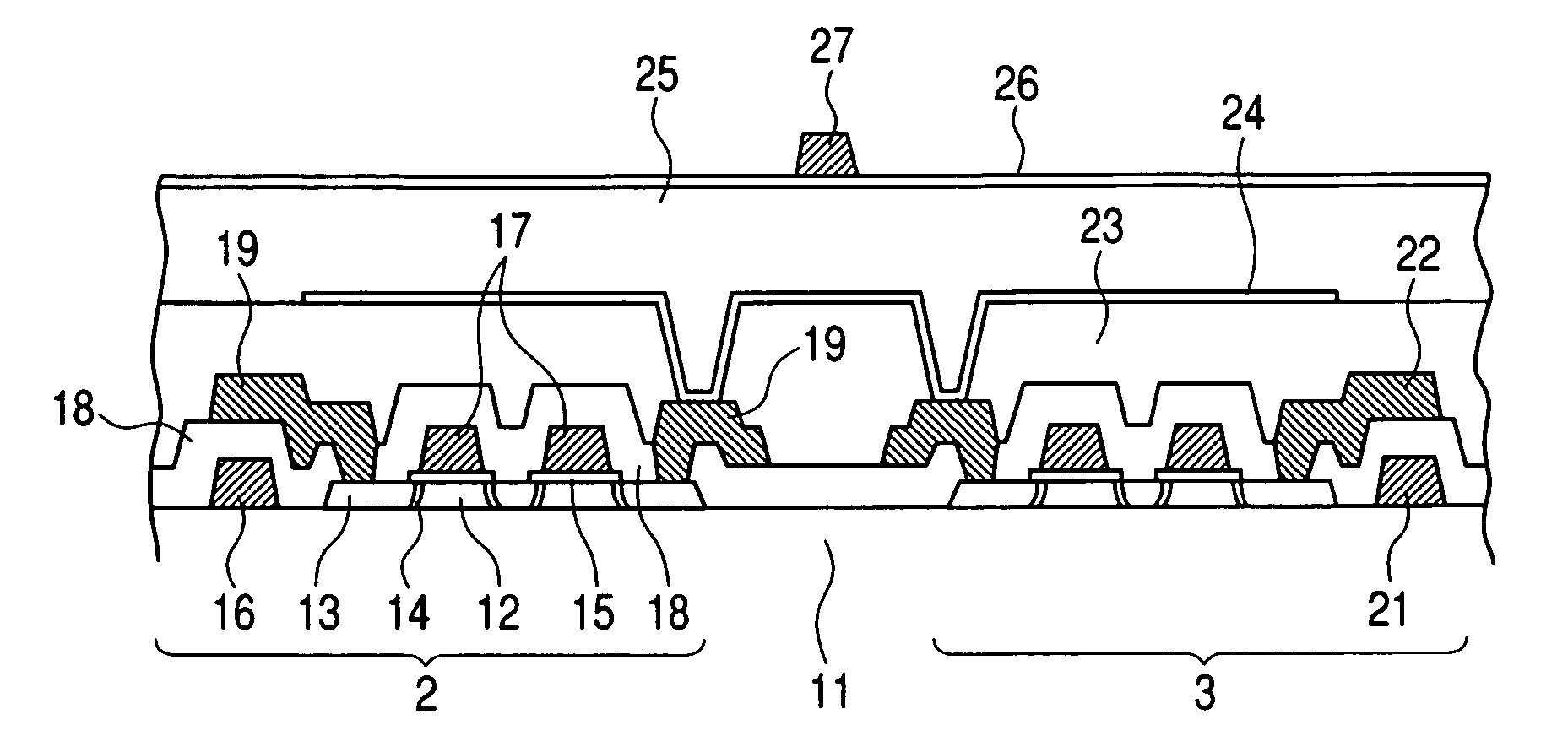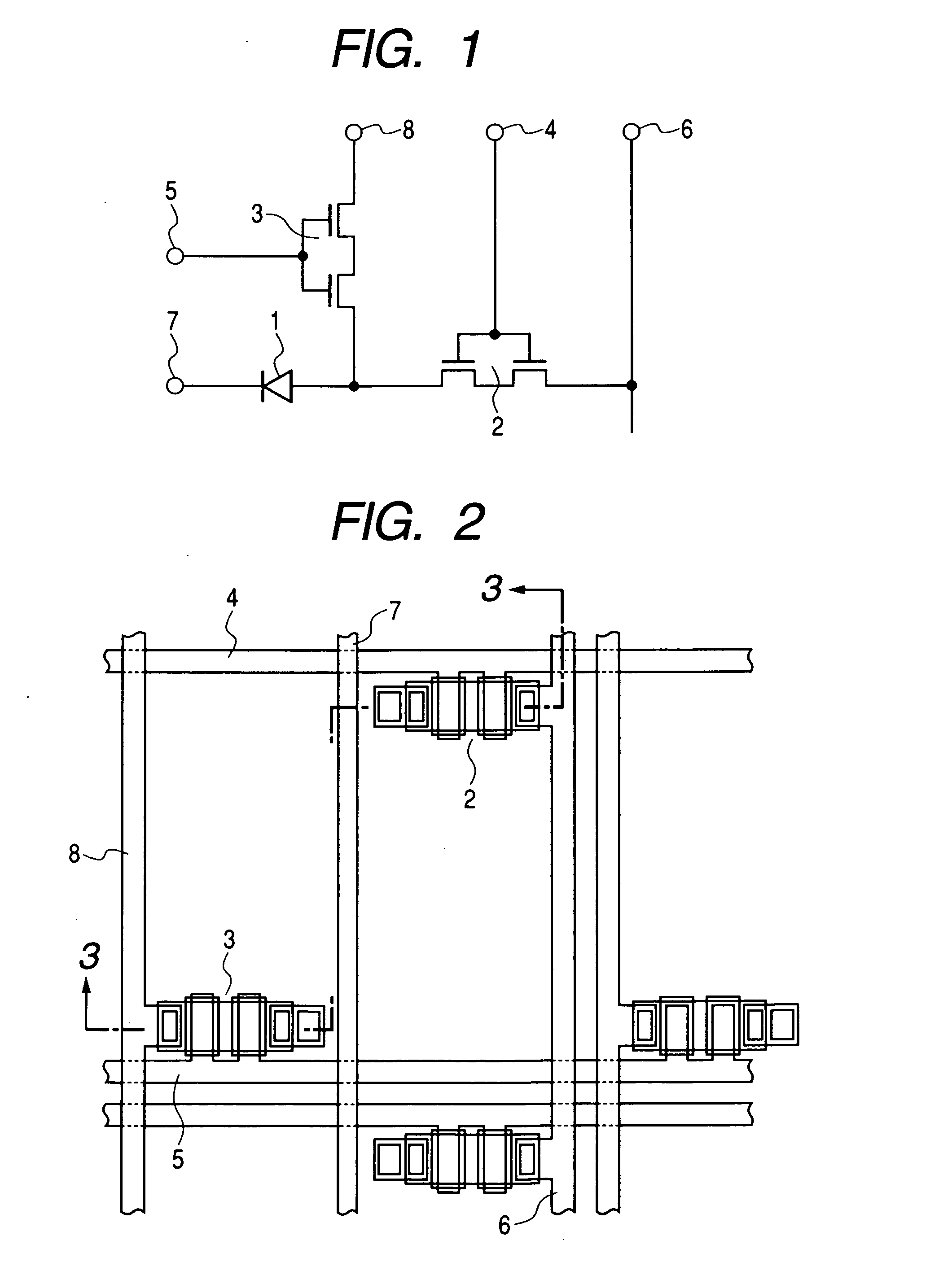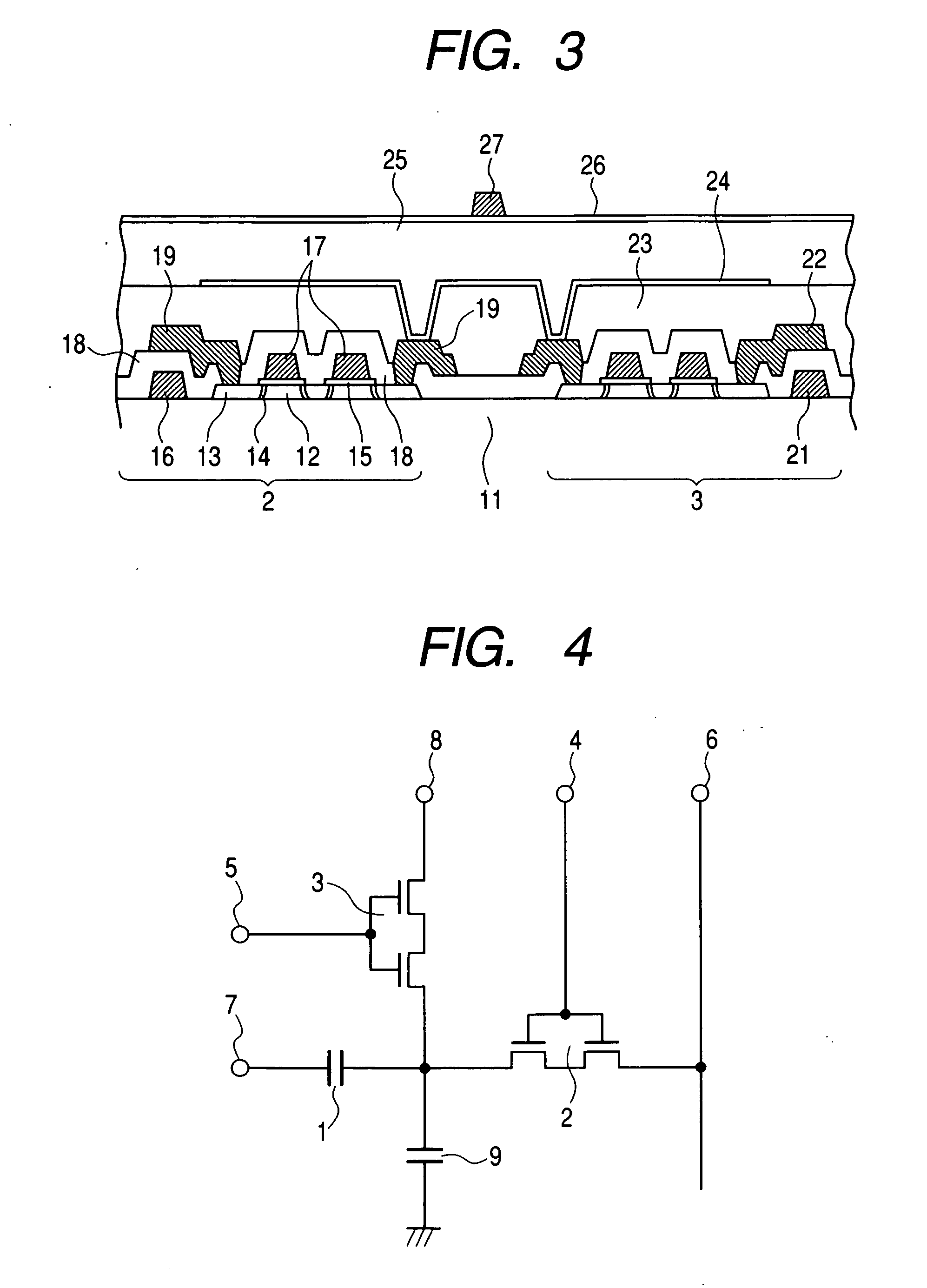Radiation image pickup device
a technology of radio frequency and image, which is applied in the direction of radio frequency controlled devices, color television, television systems, etc., can solve the problems of reducing the saturation output of the sensor, forming unnecessary parasitic capacity, and reducing the dynamic range of the sensor, so as to achieve the effect of improving sensitivity
- Summary
- Abstract
- Description
- Claims
- Application Information
AI Technical Summary
Benefits of technology
Problems solved by technology
Method used
Image
Examples
embodiment 1
[0038] A photoelectric converter in which transferring TFT elements and resetting TFT elements are disposed in pixels, respectively, and a radiation image pickup device will now be described as Embodiment 1 of the present invention. Embodiment 1 relates to an indirect type radiation image pickup device in which a wavelength conversion unit for wavelength-converting radiation into light such as visible light is disposed above a photoelectric converter, and the resultant light is read out by the photoelectric converter. Either an MIS type PD or a PIN type PD may be used for the photoelectric conversion element of the photoelectric converter.
[0039]FIG. 1 shows an equivalent circuit diagram of 1 bit (one pixel) in the photoelectric converter. In the figure, reference numeral 1 designates a photoelectric conversion element portion; reference numeral 2 designates a transferring TFT portion; reference numeral 3 designates a resetting TFT portion; reference numeral 4 designates a transferr...
embodiment 2
[0052] A radiation image pickup device in which transferring TFT elements and resetting TFT elements are disposed in pixels, respectively, will hereinafter be described as Embodiment 2 of the present invention. Embodiment 2 relates to a direct type radiation image pickup device for directly converting radiation into an electrical signal using a-Se or the like.
[0053] An equivalent circuit diagram of one bit is shown in FIG. 4. The same constituent elements as those of FIG. 1 are designated with the same reference numerals. However, reference numeral 1 designates a radiation conversion element portion. In the figure, the radiation conversion element portion 1 is a direct type radiation conversion element portion for directly converting radiation into an electrical signal. Reference numeral 2 designates a transferring TFT portion; reference numeral 3 designates a resetting TFT portion; reference numeral 4 designates a transferring TFT driving wiring; reference numeral 5, a resetting T...
embodiment 3
[0063] A radiation image pickup device constituted by an AmpTFT (amplifying TFT) having a gate electrode for receiving electric charges generated in a photoelectric conversion element, a transferring TFT for transferring an electrical signal corresponding to these electric charges, and the like will hereinafter be described as Embodiment 3 of the present invention. Embodiment 3 relates to an indirect type radiation image pickup device for wavelength-converting radiation once into light such as visible light to read out the resultant light by photoelectric conversion elements. An MIS type PD or a PIN type PD may also be used for the photoelectric conversion element.
[0064] An equivalent circuit diagram of 1 bit in the photoelectric converter is shown in FIG. 7. In FIG. 7, the same constituent elements as those shown in FIG. 1 are designated with the same reference numerals. In the figure, reference numeral 1 designates a photoelectric conversion element portion; reference numeral 31 ...
PUM
 Login to View More
Login to View More Abstract
Description
Claims
Application Information
 Login to View More
Login to View More - R&D
- Intellectual Property
- Life Sciences
- Materials
- Tech Scout
- Unparalleled Data Quality
- Higher Quality Content
- 60% Fewer Hallucinations
Browse by: Latest US Patents, China's latest patents, Technical Efficacy Thesaurus, Application Domain, Technology Topic, Popular Technical Reports.
© 2025 PatSnap. All rights reserved.Legal|Privacy policy|Modern Slavery Act Transparency Statement|Sitemap|About US| Contact US: help@patsnap.com



